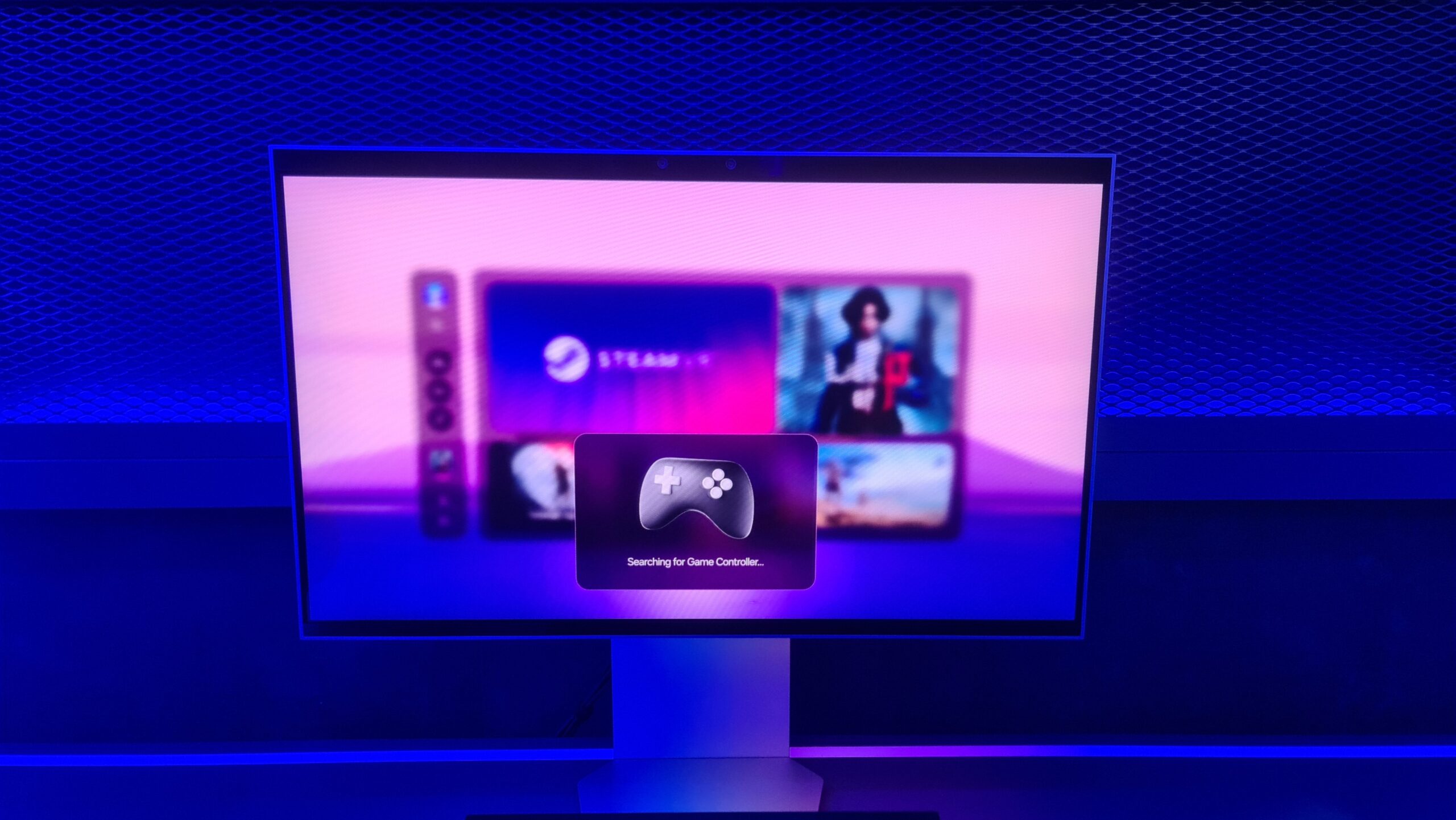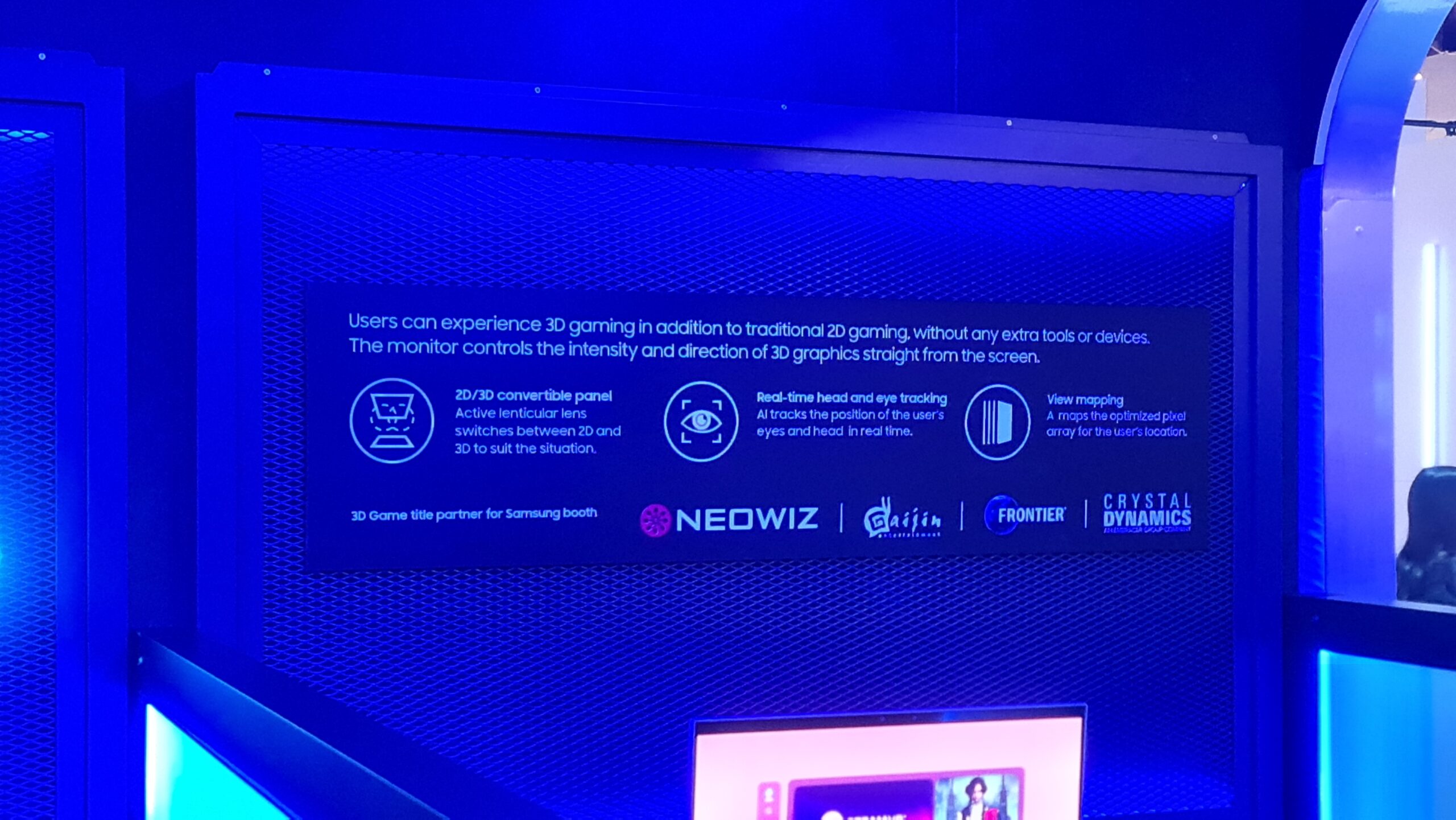




We had a quick hands on with an early concept version at at the CES show in January. Now Samsung is launching the thing for real. Yup, the Samsung Odyssey 3D gaming monitor is here.
As Jacob explained before, the main attraction of the new Samsung Odyssey 3D is stereoscopic 3D visuals without the need for special glasses. The Odyssey 3D achieves that with what is being called Light Field Display (LFD) technology. Long story short, it combines a lenticular lens with a pair of eye-tracking cameras, plus some clever algorithms.
That’s how the display can send a slightly different image to each eye, which is what creates the 3D effect, without the need for glasses. Samsung says the displays can seamlessly switch between 2D and 3D modes and will be offered in both 27-inch and a novel 37-inch panel size which we haven’t seen before.
Both models offer full 4K resolution, 1 ms response times and 165 Hz refresh. FreeSync Premium, one DisplayPort 1.4 and two HDMI 2.1 ports round out the specs Samsung has released thus far.
Samsung isn’t providing any further specs for now, but the 1ms response makes it clear enough that these are LCD rather than OLED panels. Likewise, if these monitors have fancy local dimming features, Samsung certainly isn’t shouting about it. So, the level of HDR support remains open to question.
As for the actual viewing experience, Jacob only had five minutes with the display back at CES. He didn’t find the 3D effect entirely convincing.
“For the most part, the game environment appears as one plane and your game character on another—closer to the player. Though occasionally during my brief experience with the tech, I’d spot a tree branch or sign that’d reach out towards me,” Jacob said.
Of course, Samsung will have refined the product in the meantime, so the final experience may differ. Indeed, at the time it wasn’t clear if Samsung was going to actually launch the monitor as a shipping product or if it was jut a concept.
Now we know it’s something you’ll actually be able to buy, albeit pricing hasn’t been released. That all leaves us with a couple of questions. Firstly, this is far from the first time the display industry has had a crack at stereoscopic 3D. Numerous attempts have been in the past, including Nvidia’s 3D Vision. All have ultimately failed.
Will the Samsung Odyssey 3D be any different? Color me skeptical, for now. The other open question is whether we might see the 37-inch 4K panel used in the larger of the two models deployed in another non-3D display.
37-inch 4K is not a panel format we’ve seen before and it could make for an interesting compromise between sheer scale and resolution, what with 40-inch-plus TVs really being too big for ergonomic desktop use. Ironically, that could end up being the most interesting development from this product announcement if the whole 3D thing fails to catch on. Again. Watch this space.



